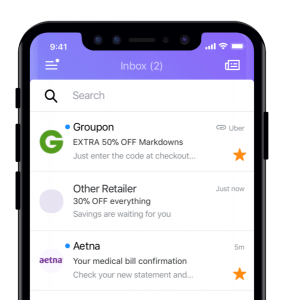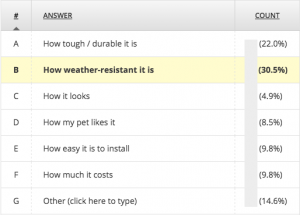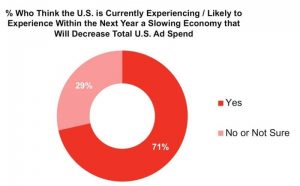Successful influencer marketing campaigns depend on it.
If you’re a brand marketer, you’ve probably asked yourself “where and how do I find the influencers to post about my brand?” Then you probably start where all Americans start looking for answers to life’s big questions: Google.
A simple search will yield hundreds of posts on this topic (many from our own blog). Then you’ll narrow your searches down a little– “New York Influencers,” “Fitness Influencers”… etc. Usually, these searches will lead you to companies that promise to give you magic access to individuals with the biggest followings. But simply trying to find any influencer for your program misses the bigger point of influencer marketing. The question you should be asking is “what kind of influencers should be posting about my brand?” Having just anyone with a huge following post about your brand will get your message in front of a lot of people but it won’t build the kind of trust and engagement that’s possible with great influencer marketing. For successful influencer marketing, you need to tap content creators who are an authentic match for your brand and your campaign.
So before you set out searching for influencer for influencers, we want to show you why authentic matches are important and how to create an influencer persona that fits the program’s message. This will influence (pun not intended) your recruitment effort.
You can think of influencer marketing as a more scalable and sustainable form of word-of-mouth marketing. In the real world, we rely on recommendations from our friends when we make purchase decisions– and this plays out similarly on social networks. Marketers are leveraging influencers to build “brand trust and loyalty […] since word-of-mouth acquisition not only reduces the cost of acquisition but has a 37 percent higher retention rate” (Spencer, 2015). This tactic gives brands an opportunity to build connections with ideal consumers through the social personalities they follow and trust. And it is working: in a survey of marketers, “93% of respondents considered their engagement with influencers as an effective strategy to draw attention to their brand” (Morin, 2015).
Marketers trust influencers because influencers are trusted by their followers. This isn’t new. The days of athletes on Wheaties boxes and spokesmen in TV commercials may be ending, but the visual influencer is alive and well in the social sphere. Harnessing the power of their peer recommendation and their ability to create impactful images can help your brand gain awareness and affinity from the audiences you covet.
The greatest value in social networks is the “data on individual preferences and on social networks: who likes what, who is friends with whom, and what sort of information do friends share” (Galeotti and Goyal, 2009, p. 521). What also helps is the nature of clustering friendships and homogeneous tendencies. Essentially, people tend to connect with people similar to themselves with shared connections, increasing the levels of trust among the network (Campbell, 2013). So if you love rock climbing and follow a rock climbing enthusiast on social media, their opinions on the right climbing gear and snacks will carry some serious weight with you– more than a banner ad on a climbing website or a celebrity endorsement.
Research has determined that peer recommendation through word of mouth– whether online or in person– drives decision making at a higher rate than advertisements or marketing campaigns (Galeotti and Goyal, 2009).
Sounds too good to be true right? The catch is that these recommendations have to seem genuine and organic. That’s where the smart match comes in. What is most important, especially with online word-of-mouth marketing, is that that the communication is organic in that “it occurs between one consumer and another without direct prompting, influence, or measurement by marketers. It is motivated by a desire to help others, to warn others about poor service, and/or to communicate status” (Kozinets, et al, 2010, p. 72). This doesn’t mean that there can be no evidence of compensation (we talk often about the importance of proper disclosure) but it does mean that the endorsements need to be thoughtful and natural to the influencer’s feed. It also means that the product needs to be a realistic part of the influencer’s life. To put it simply– it doesn’t work if it sticks out like a sore thumb.
If this sounds like a tricky balance, it’s because it is. But that balance is worth working for. Because there can be serious consequences to your brand if your influencers are insincere.
This authentically shared content is the ultimate goal. But in order for that authenticity to exist, you need to know how to find the right influencers. Posting styles, follower counts, and interest categories all vary between social users. Before dreaming up the ideal collection of photos that will be shared on behalf of a brand campaign, you have to determine the ideal person to create those images.
When defining your ideal influencer persona, consider the following:
Interest Categories and Subcategories
Categories such as beauty bloggers, fitness gurus, and tech enthusiasts are clearly defined, but can always be further refined with specific subcategories. If you take running, for example, there is a significant difference between users who like to share photos of the latest trends in running sneakers and those who post a map graphic of their daily 10-mile run.
Posting Styles
Photo styling exists outside of the big fashion magazines. In fact, it lives in every glimpse of your Instagram newsfeed. Choosing an influencer who posts photos in a consistent, signature style can be the perfect extension of a brand’s sophisticated advertisements, or even provide content for future marketing efforts. Look for influencers whose Instagram posts mirror your brand’s look and feel– whether that’s black and white, bold and neon, or light and airy. Their content will blend seamlessly into your feed when shared.
Social Presence
Where will influencer marketing be most impactful for your brand goals? It’s not smart to push content out on a platform just because you’ve heard it’s the next big thing. You should consider where your target audience lives: If you’re looking for 40-year-old women, don’t head for Snapchat and similarly if you want your brand message to hit young millennials, don’t aim for Facebook. Additionally, think about the other uses you may have for the content– are you only looking for exposure? Or will you be collecting the content re-share on your brand’s social channels?
The key to finding success with influencer marketing is identifying the influencers who can authentically share your brand’s message with their audience. Learn what influencers are looking for when being recruited for a program and the tactics used by some of the top marketers to activate these campaigns by downloading our free ebook.
Sources:
Campbell, Arthur. (2013). “Word-of-Mouth Communication and Percolation in Social Networks.” The American Economic Review, Vol. 103, No. 6, pp. 2466-2498.
Galeotti, Andrea and Sanjeev Goyal. (2009). “Influencing the Influencers: A Theory of Strategic Diffusion.” The RAND Journal of Economics, Vol. 40, No. 3, pp. 509-532.
Morin, Raymond. (2015). “12 Emerging Trends for Social Media Influencer Marketing.” Maximize Social Business, 15 November 2015. Date accessed 19 February 2016 http://maximizesocialbusiness.com/12-emerging-trends-social-media-influencer-marketing-22229/
Spencer, Michael. (2015). “Rise of Influencer Marketing in 2015.” LinkedIn, Dec 28, 2015. Date accessed 19 February 2016
https://www.linkedin.com/pulse/rise-influencer-marketing-2015-michael-spencer-%E8%A8%B1%E7%84%A1%E6%A5%B5
(30)








